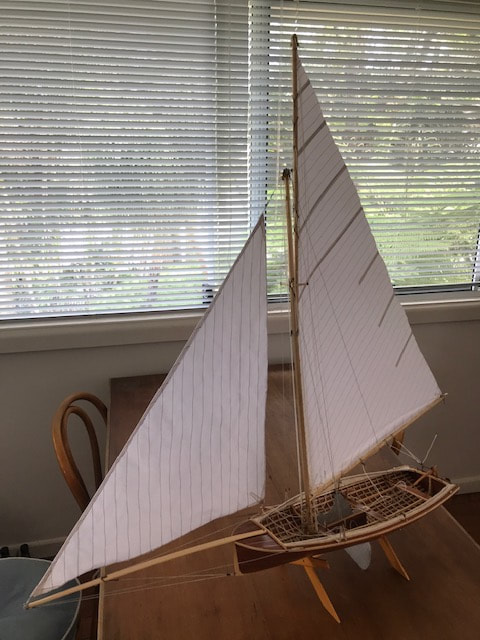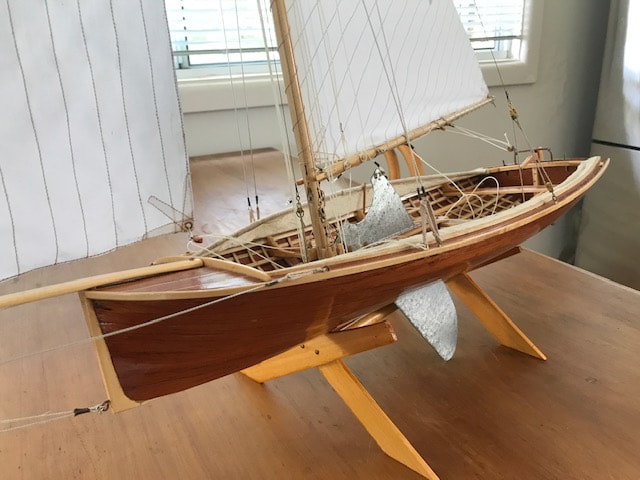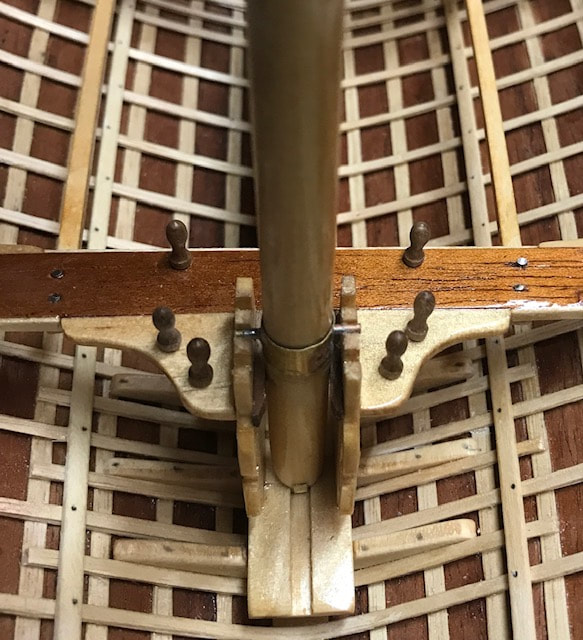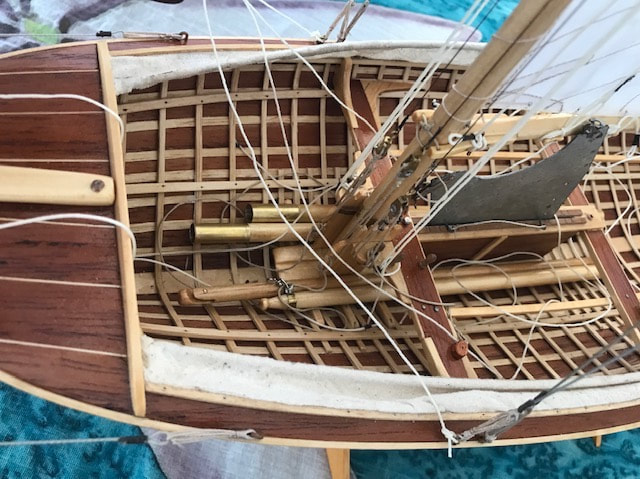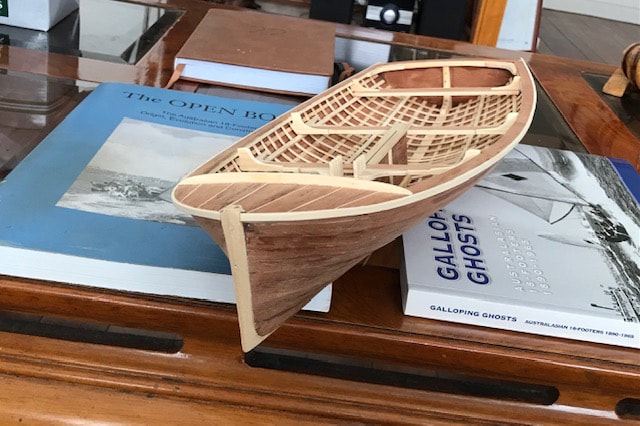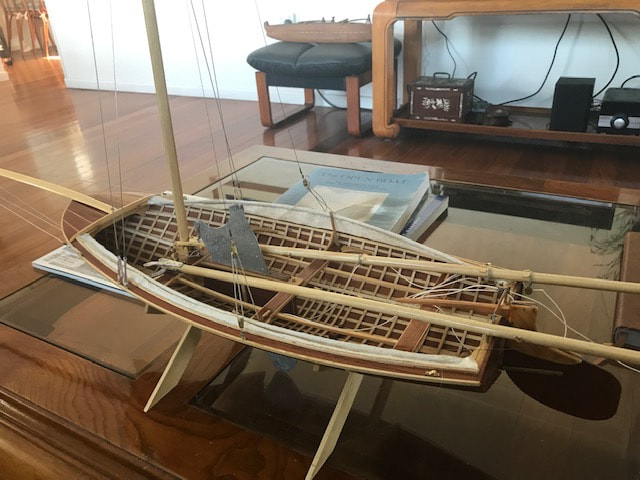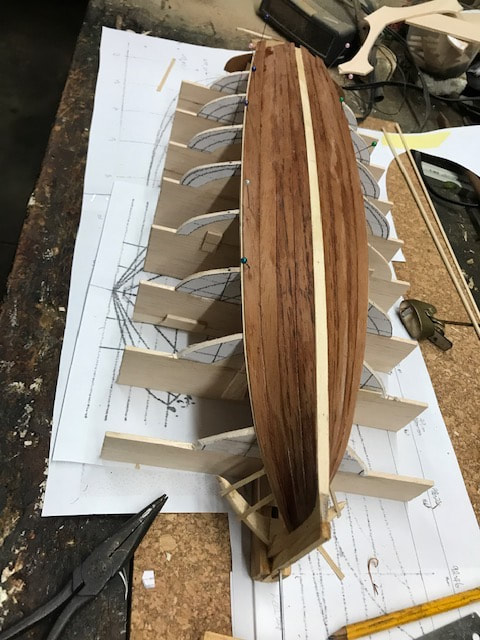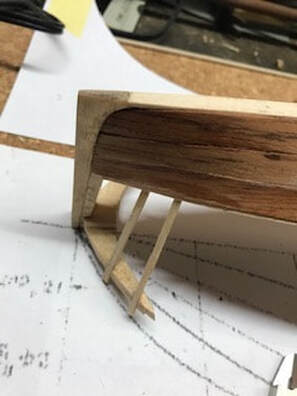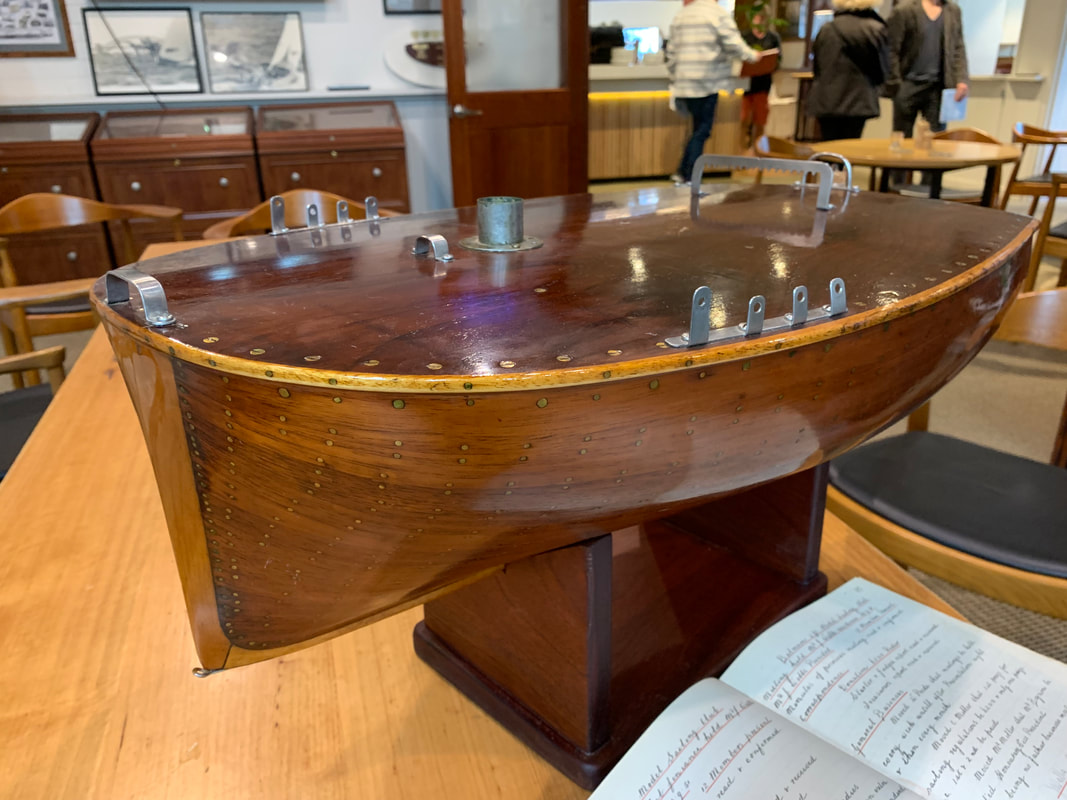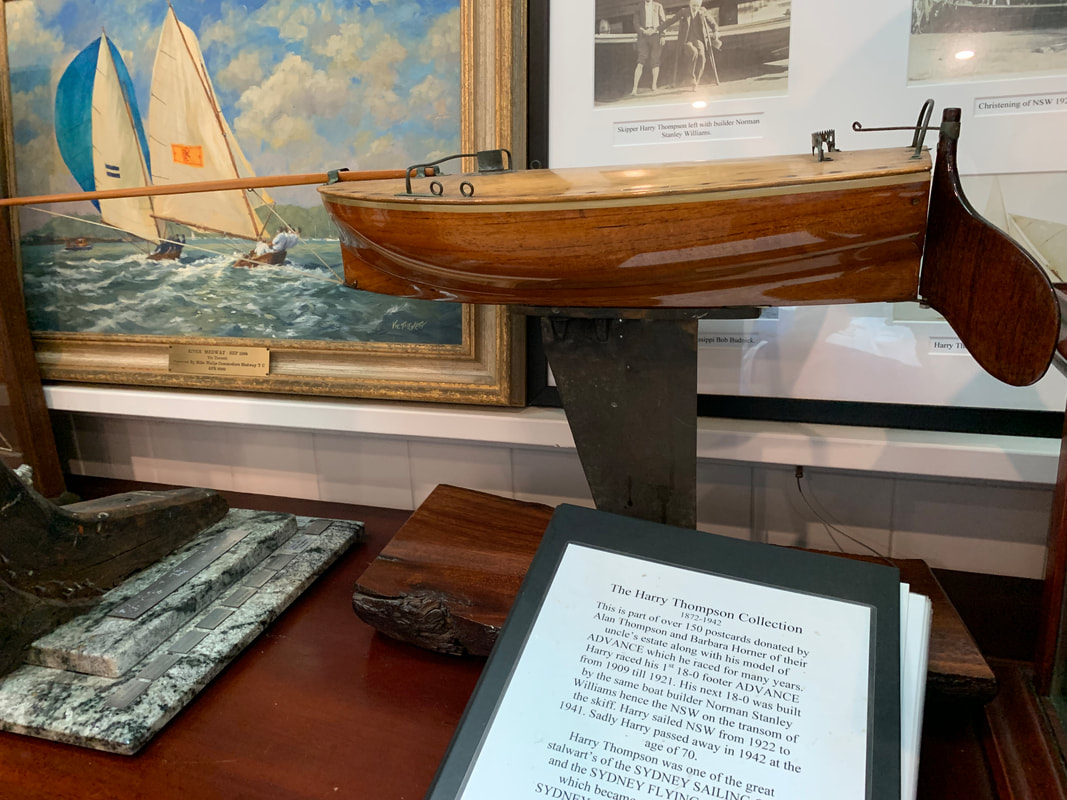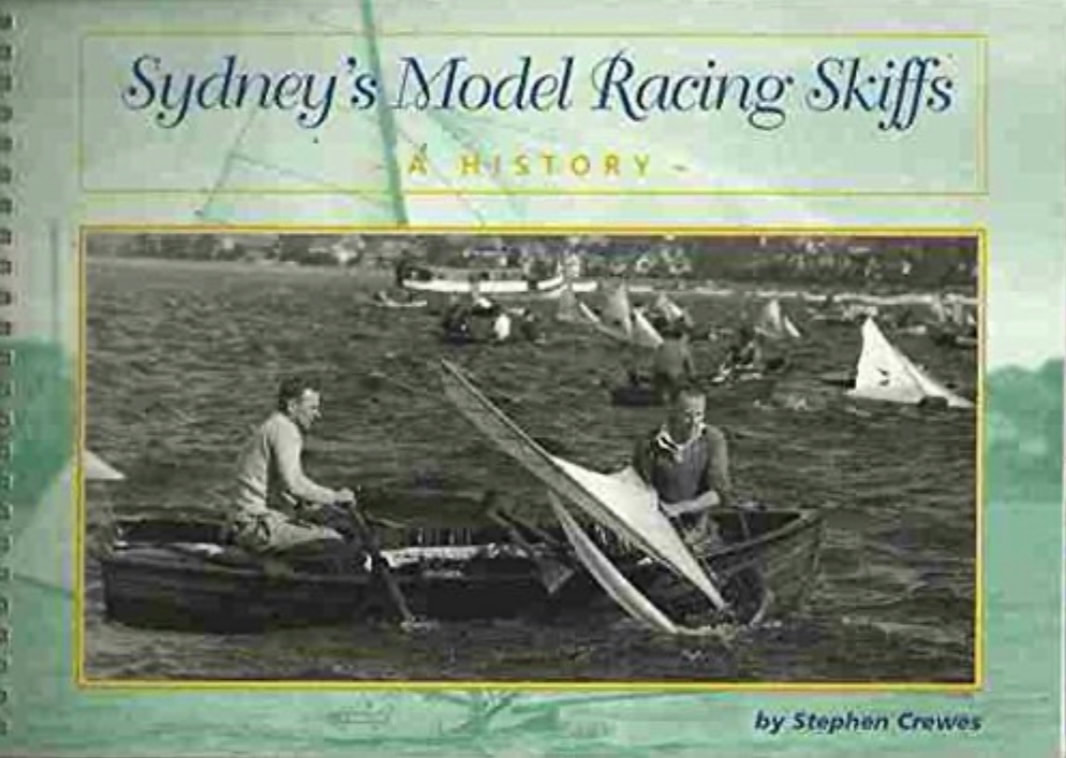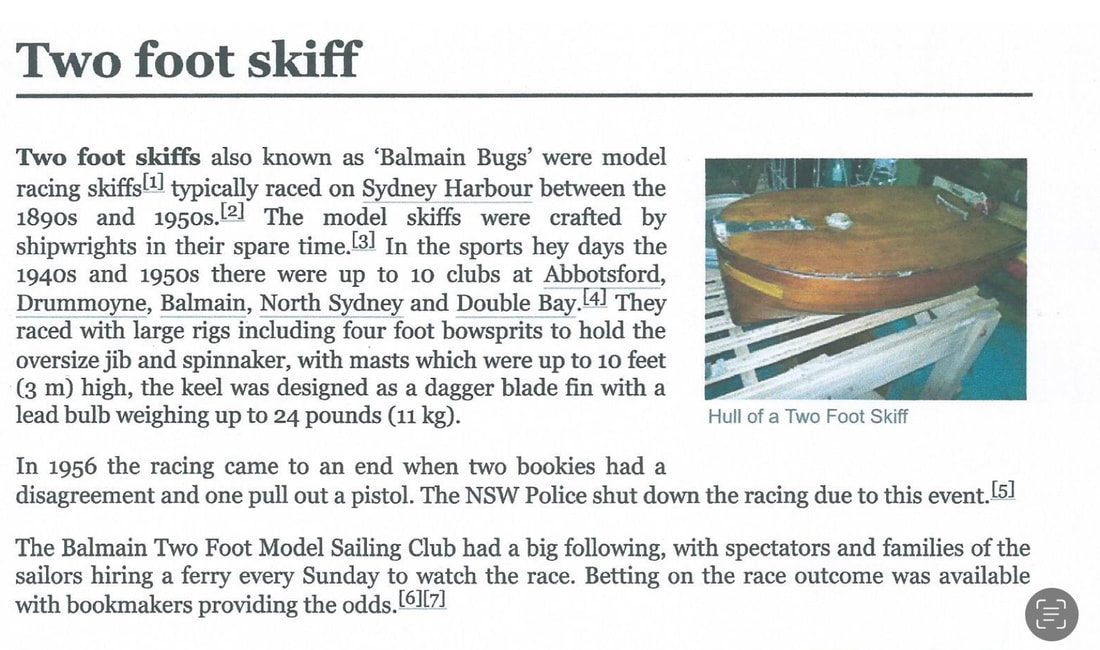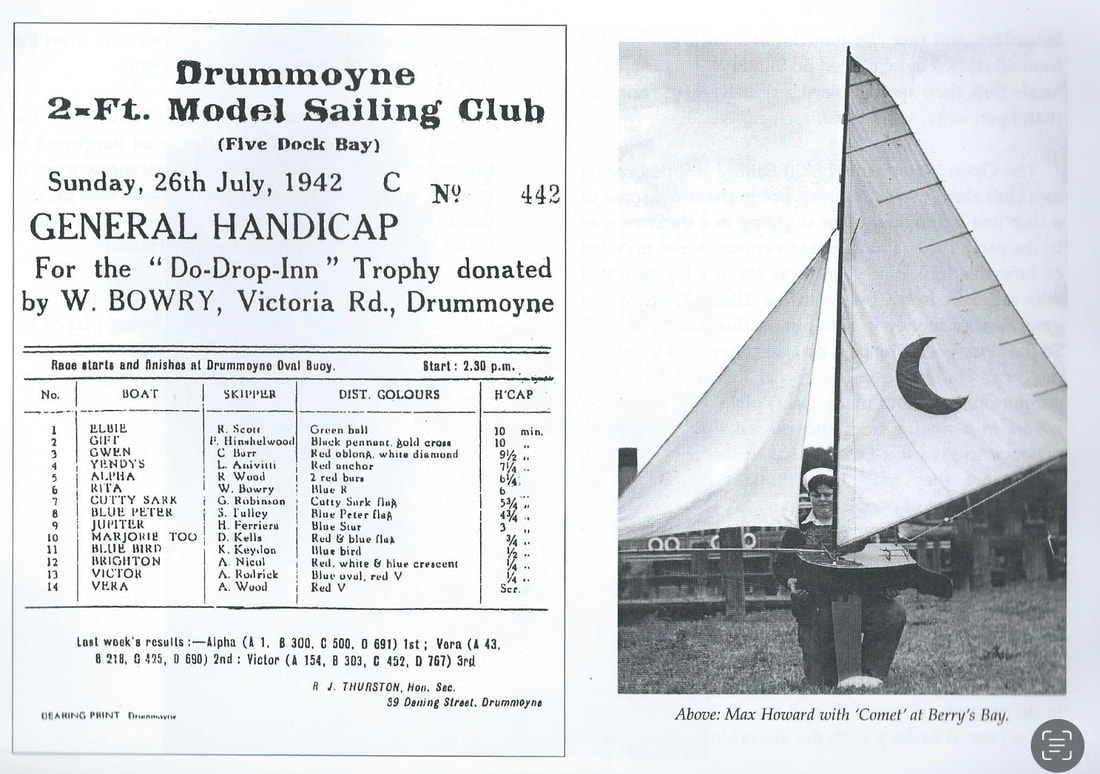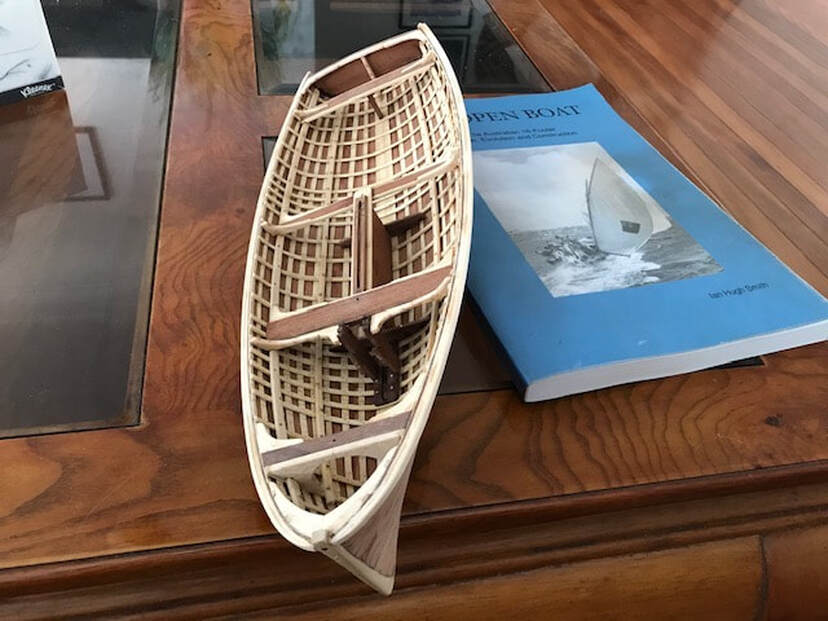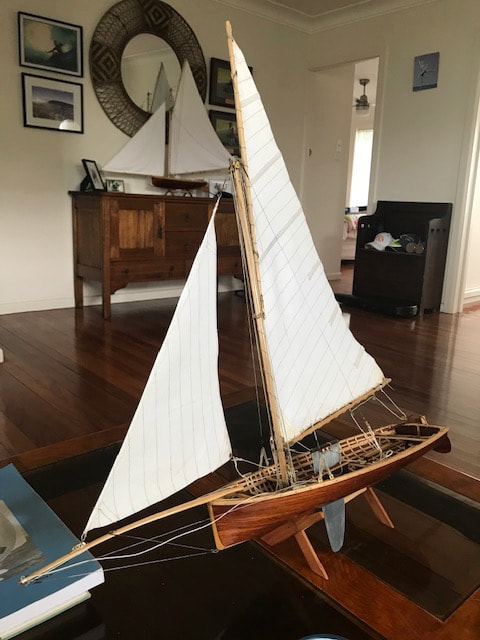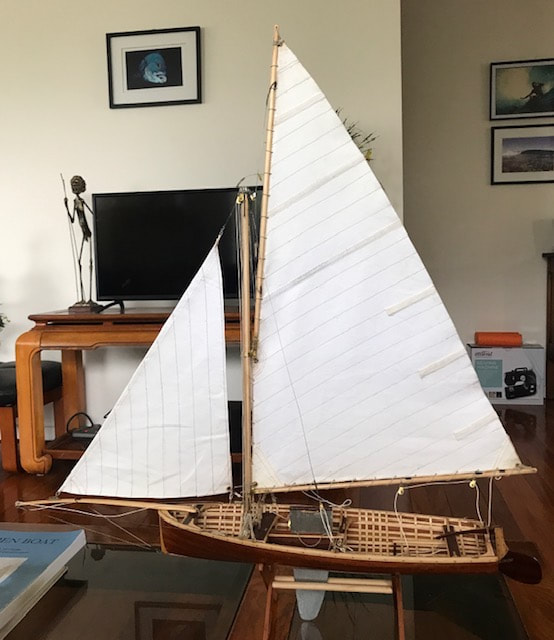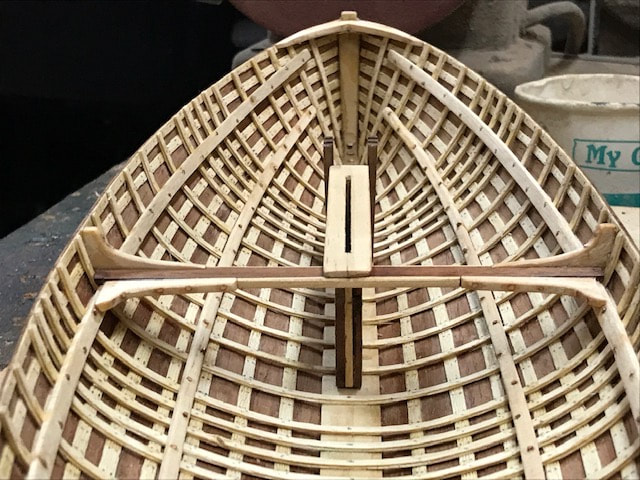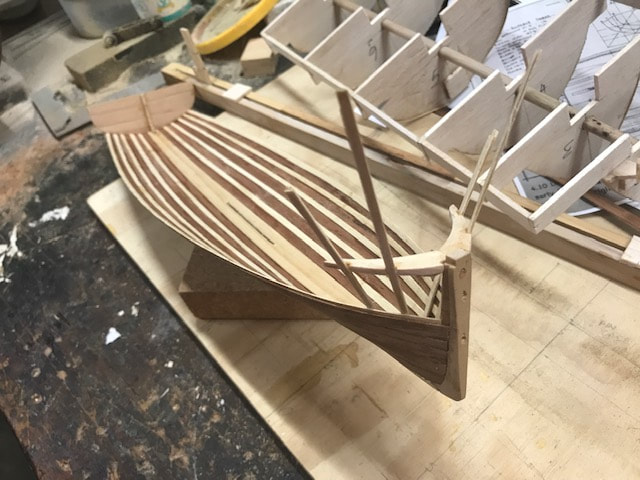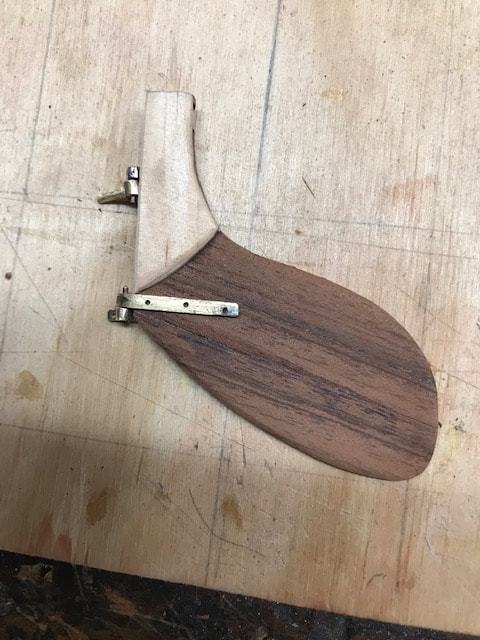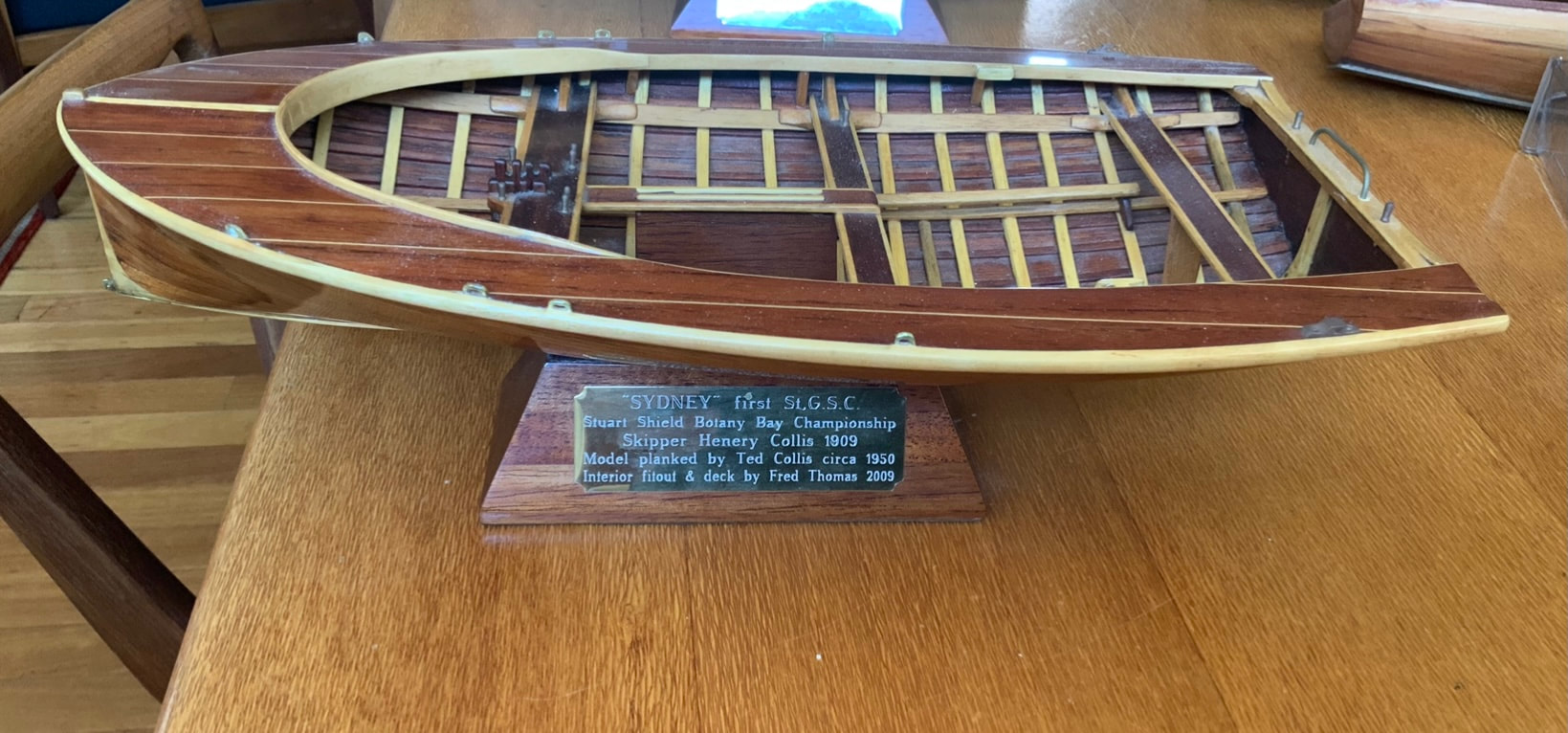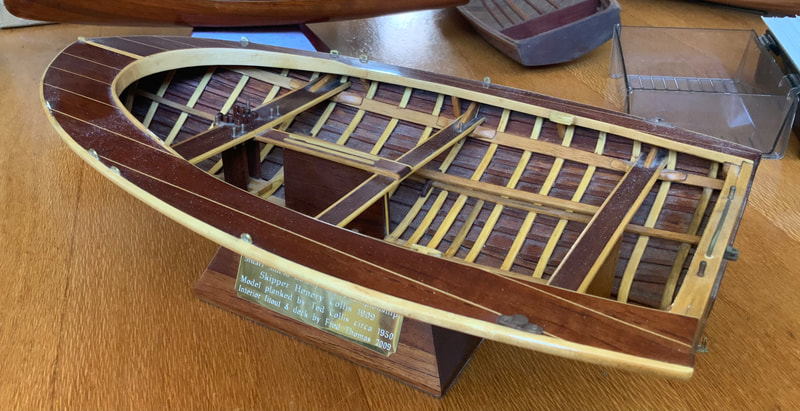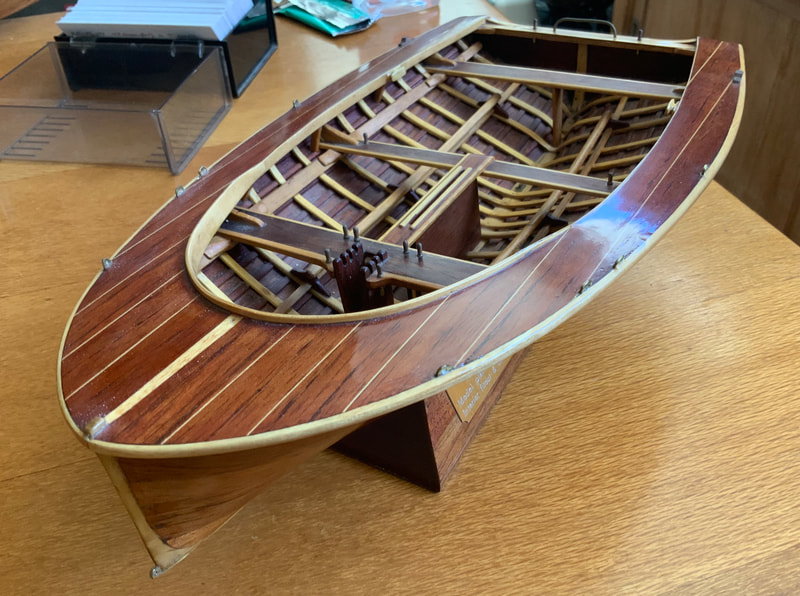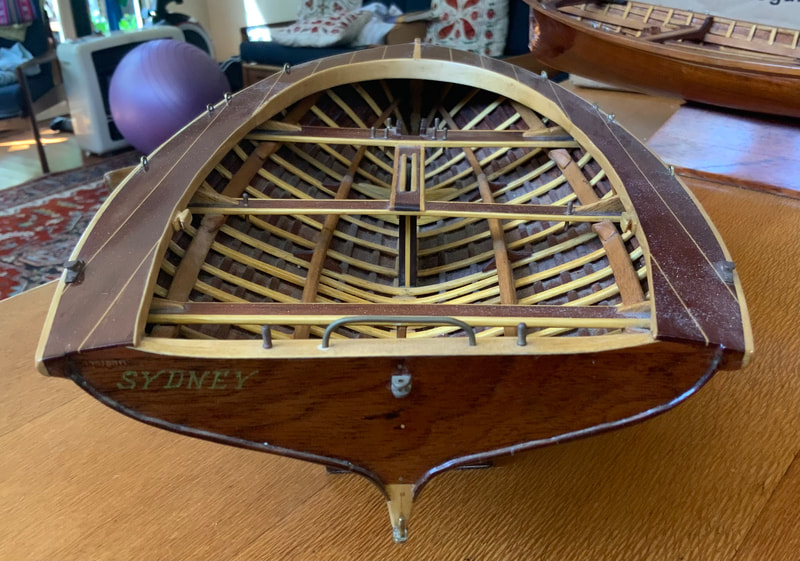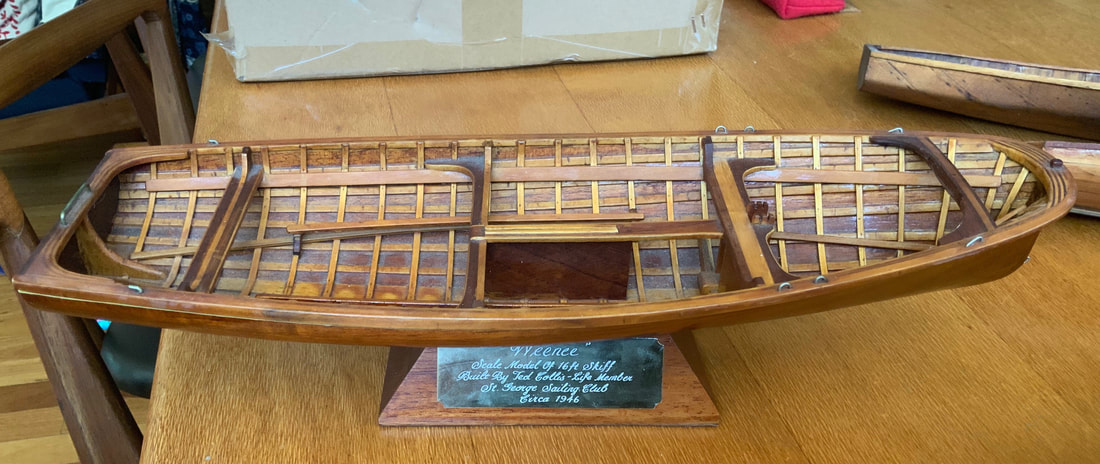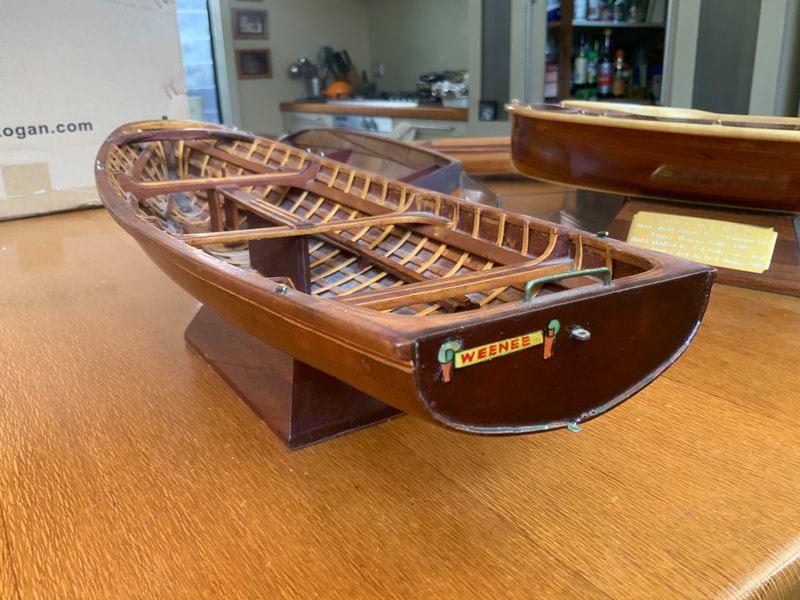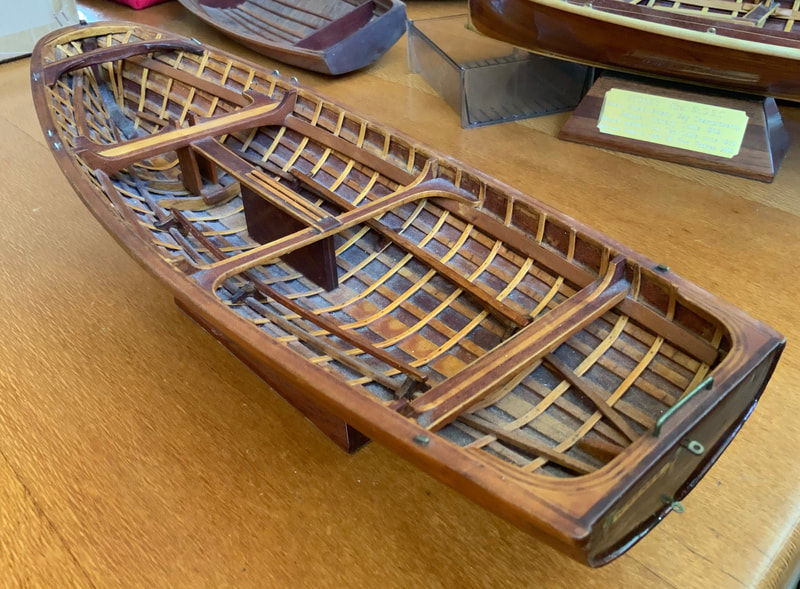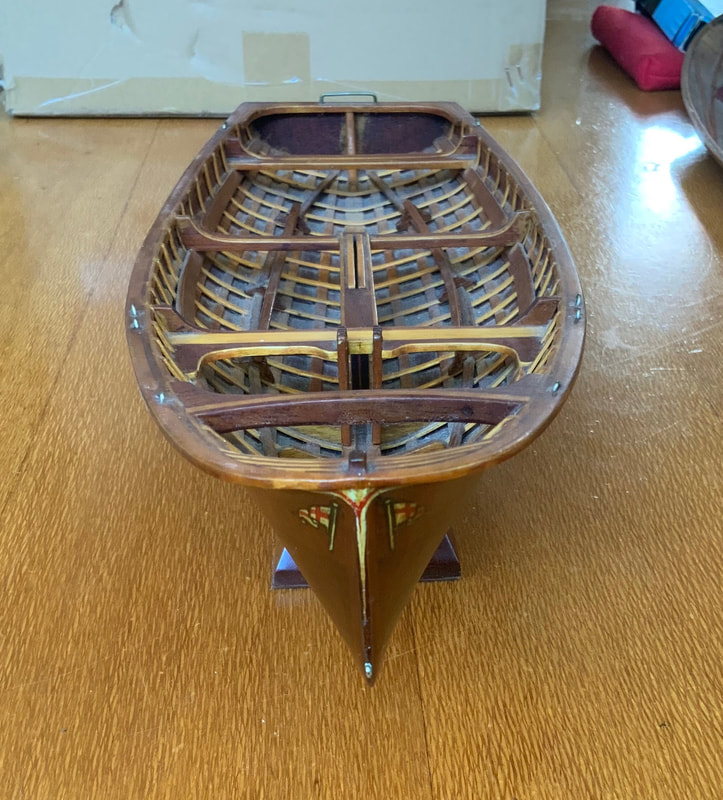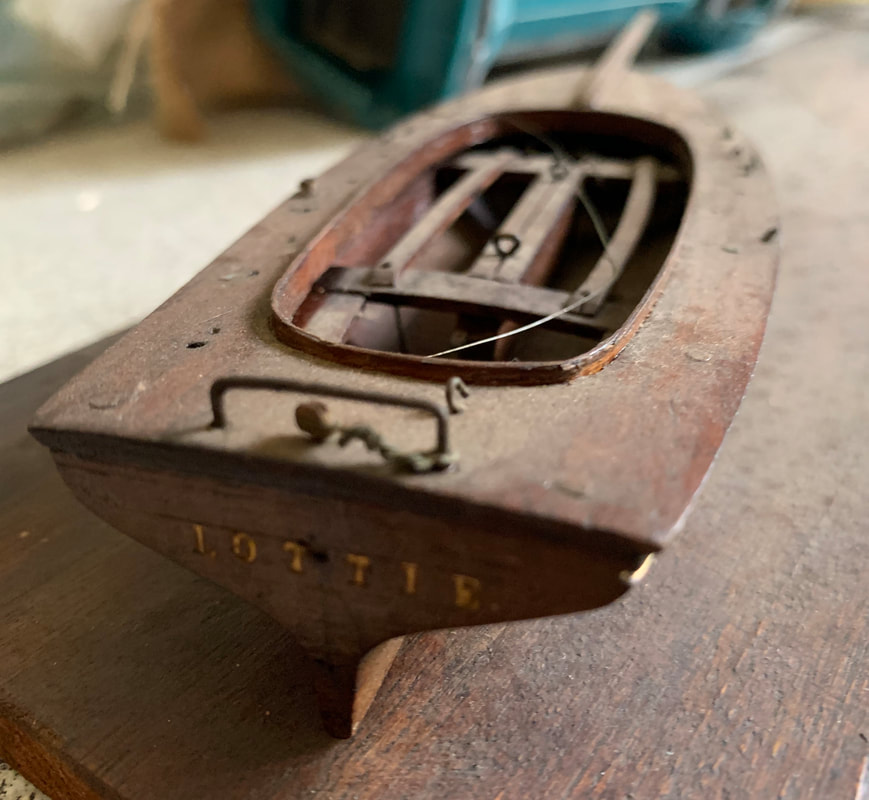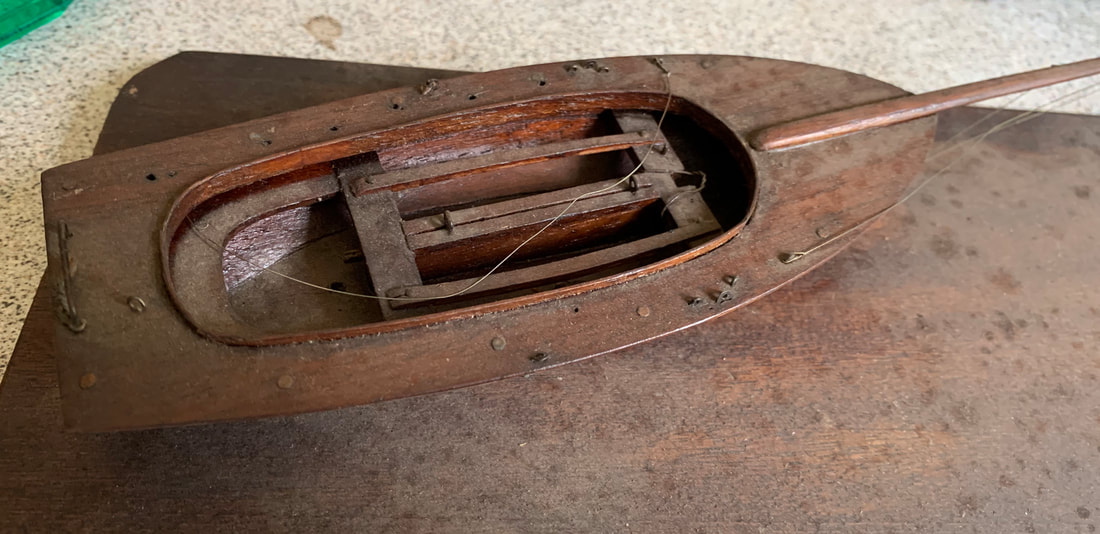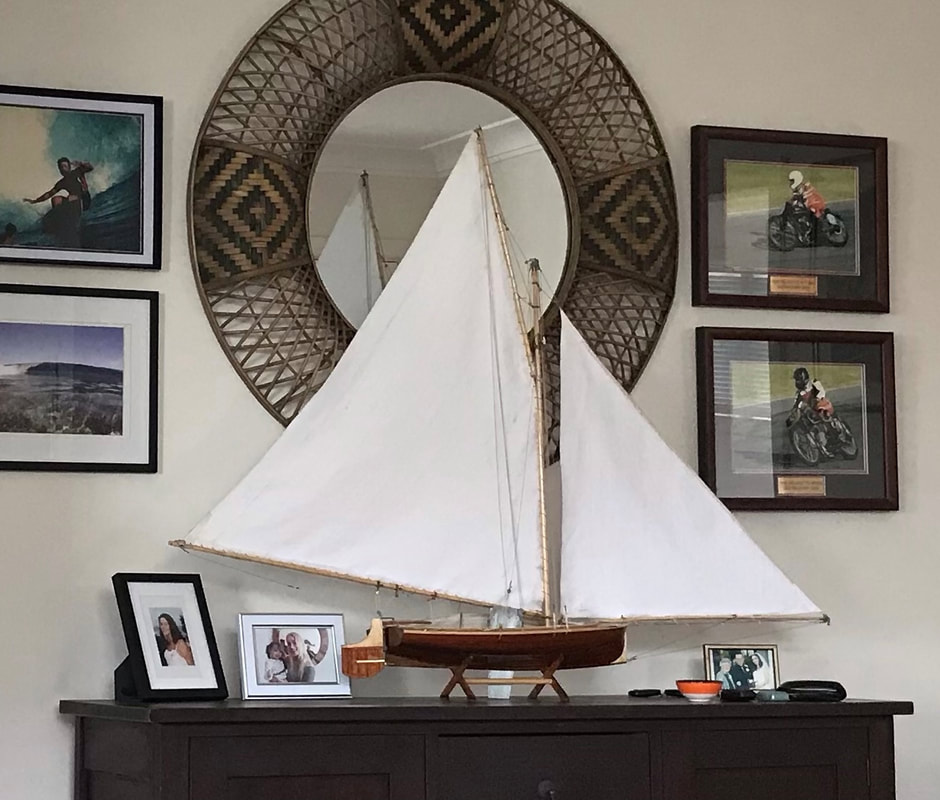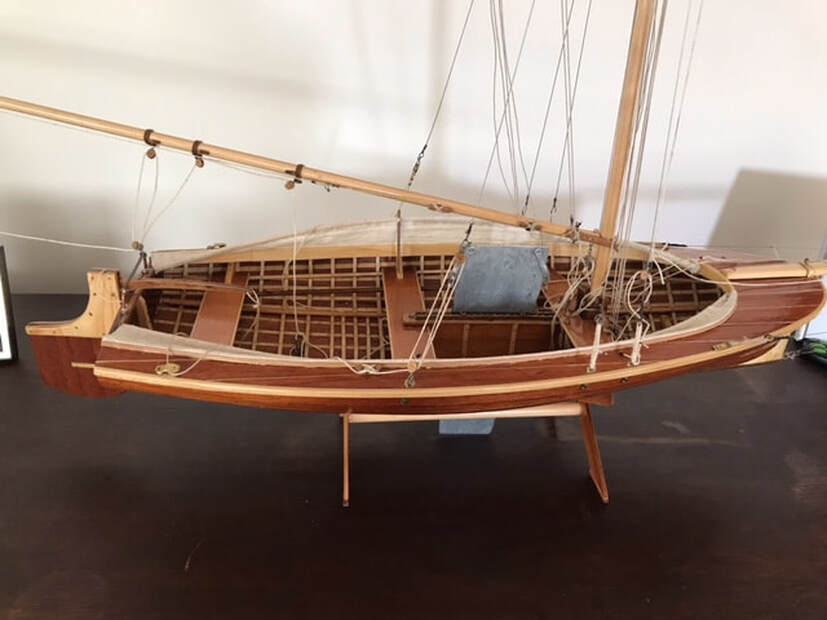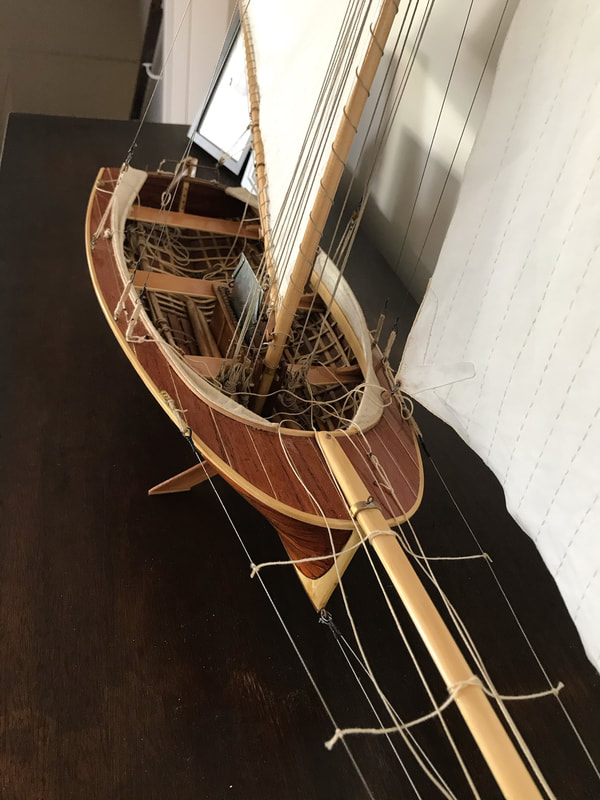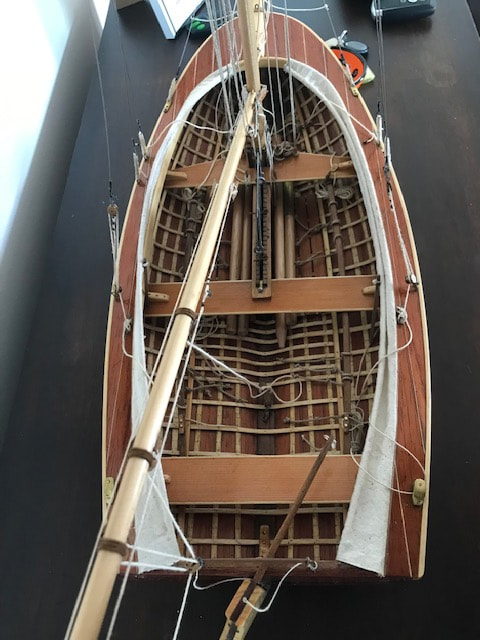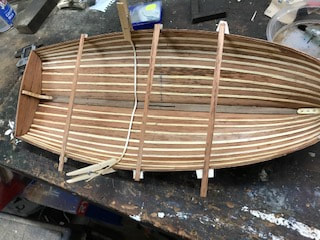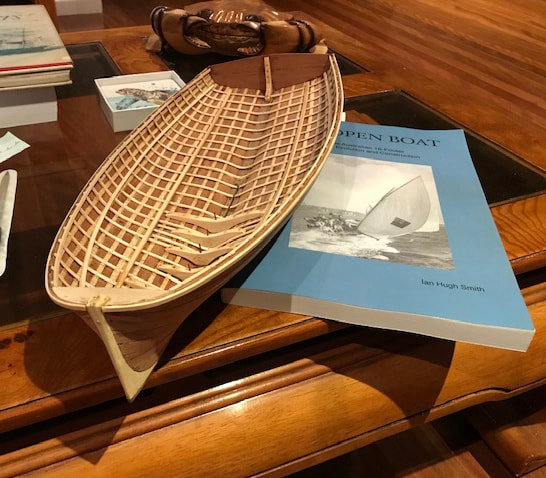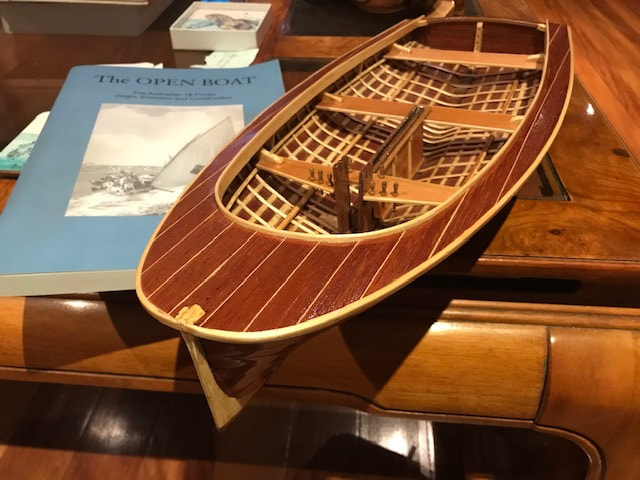Models of open boats have been made since there were open boats. This Page is dedicated to featuring models both old and new. We'll put up as many old models as we can find, and also feature new models.
Martin Lewis's new 18-footer Model
Martin, whose models feature regularly on this Page had completed his latest, an 1":1' model of an 18-footer based on the lines of the 1932 boat Aberdare published in The Open Boat book. As usual, Martin's work is brilliant.
October's post on the early stages of Martin's build...
Martin Lewis, the builder of several of the models you can see below in previous posts has started a new model of a 7' beam 18-footer using lines and information from The Open Boat book, see the Books Page. Using a scale of one inch to the foot the model is 18" long. Notice that Martin is using the technique revealed to me by some of the old boatbuilders I recorded years ago for building the "Brisbane bows", the very full rounded bows on deck that fined down to a very sharp waterline. New South Wales boatbuilders were baffled by this for a while until they realised that the way to do it was to fit the breasthook to the back of the stem and hand-bend (with steam of course) a couple of ribs to develop the flare, and then plank over them. Martin's already well past this point and I'll post more recent photos soon.
The Two-foot Model Skiffs

Sydney Flying Squadron Life Member the late Kevin O’Keefe joined the Balmain 2-Foot Model Racing Club around 1954 and raced a 2-footer named Fay for several seasons. The builder is unknown but Fay was racing under a previous owner for several seasons prior. Kevin’s brother Barry and the O’Keefe family recently donated the hull of the Fay to the Sydney Flying Squadron where it is now on display. Included in the donation was a ledger containing the handwritten minutes and race results of the Balmain 2-Foot Model Racing Club for several seasons in the early 1950’s.
Kevin O’Keefe in one of his roles as sin bin timekeeper for the Balmain Tigers, and a Life Member of the Tigers too. A former player as well as a sailor, Kevin was a stickler for rules and would not let players off a split-second.
Kevin O’Keefe in one of his roles as sin bin timekeeper for the Balmain Tigers, and a Life Member of the Tigers too. A former player as well as a sailor, Kevin was a stickler for rules and would not let players off a split-second.
Kevin’s 2-footer Fay, now at the Sydney Flying Squadron along with the handwritten ledger. Photo Ian Smith.
Up until the mid-1950’s waterways around Sydney would see gatherings of men and boys racing model boats, which had formed into 3 main classes in the early 20th Century, classified by deck length. There were 6”, 12” and 2-foot (24”) classes, as well as smaller groups of 9” and 18”.
Happy Harry Thompson’s 18” model Advance which was donated to the SFS several years ago. Photo Ian Smith.
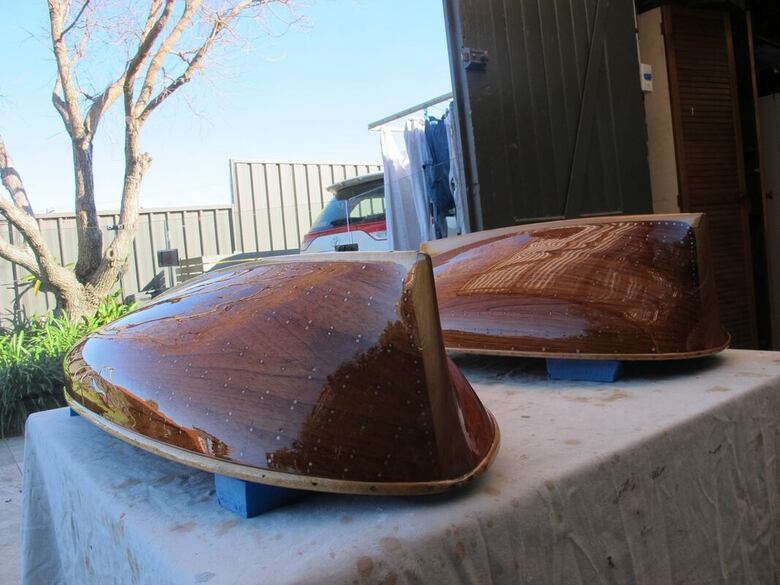
SFS member and Britannia replica crew member Matt Balkwell has his Grandfather Horrie Balkwell’s two 2-footers. Matt is the 4th generation of SFS sailors in the family, his Great Grandfather, Grandfather Horrie and his father Ron were all SFS legends. Photo Matt Balkwell.
Small groups raced their boats in the ponds at Centennial Park and in Scarborough Park , Kogarah. There was no radio control back then so skippers would wade into the water and set sails for the first leg, then run around to where the boats arrived on that leg to adjust the sails and send them off on the second leg. Larger groups operated on a number of bays in Sydney Harbour, and would chase their boats in rowing skiffs.
Martin Lewis' 16-Footer
Martin Lewis, builder of the 18-footer model further down on this Page, sent in photos of his latest build, a generic 16-footer that he built using information in The Open Boat book with additional help from Wayne Pascoe a 16-footer historian, and Bill Wright of the Wrightsons boatbuilding dynasty.
14-footer Sydney, 1910
Another model built by Ted Collis, this time of the 14-footer Sydney with which his forbear Henery (sic) Collis won the Botany Bay Championship in the 1909-10 season . Ted planked up the model about 1950 and Fred Thomas finished it off in 2009. The shape and detail shows they were smaller versions of the 18-footers and were also an unlimited class (though they actually developed before the 18-footers, see the 14-FOOTERS Page). We don't know the sail insignia, so I can't identify her in any photos. More photos below. Model courtesy of Steve Kavanagh.
16-footer
A 16" model of a sixteen-foot skiff, built by Ted Collis of St George Sailing Club circa 1946. So far we can find no record of a 16-footer named Weenee at the St George Club or any other, though there was an Oweenee about 1906-07 on Sydney Harbour when the 16-ft skiff movement was quite new. It appears to be a generic model of a skiff with details that were similar from the early 1900's until the early 1950's. Laminated construction of some knees and thwarts would suggest it was meant to represent the contemporary boats at the time of the model's build. Model courtesy of Steve Kavanagh. More photos below.
24-footer LOTTIE
This is a model of the 24-footer Lottie of 1876, one of the earliest racing 24-footers, which was built by Joe Donnelly for Sol Hyam. The model is in the collection of artist John Firth-Smith, and John says he also has the rig and a crew of lead figurines and intends to fully restore it one day. It is fascinating because the detail work agrees with what we know about the early 24's, including the all-round decks, swinging-out battens and long centreboards (fore and aft) with handles. Lottie is listed on the 24-FOOTERS Page with her whole fascinating story.
We believe the Lottie model must have been done at the time she was racing, so most likely at some time in the last quarter of the 19th Century. The model maker is unknown.
And now to more recent models:
And now to more recent models:
This is a recently-completed generic 18-footer model by Martin Lewis who used to sail as bailer boy with Cliff Monkhouse in the late 1950's and early '60's. He used hull and rig details of Britannia (1919) and Mele Bilo II (1922) from The Open Boat book. Martin's detailed work is superb. Here's some more images of the completed boat and some of the building process. Scale 1":1', 18 inches on deck. The story of Britannia is listed alphabetically on the 18-FOOTERS Page, and the story of Mele Bilo II is on the WEST AUSTRALIAN 18-FOOTERS Page.
